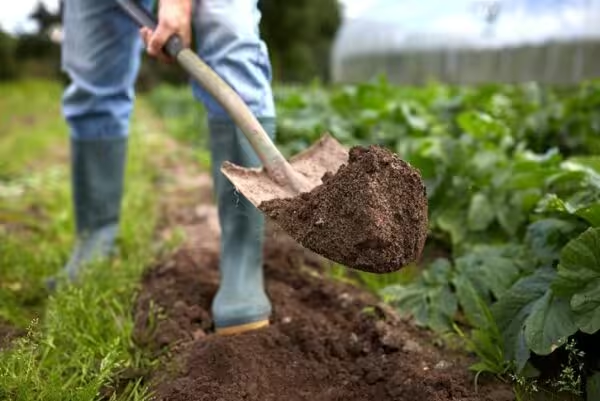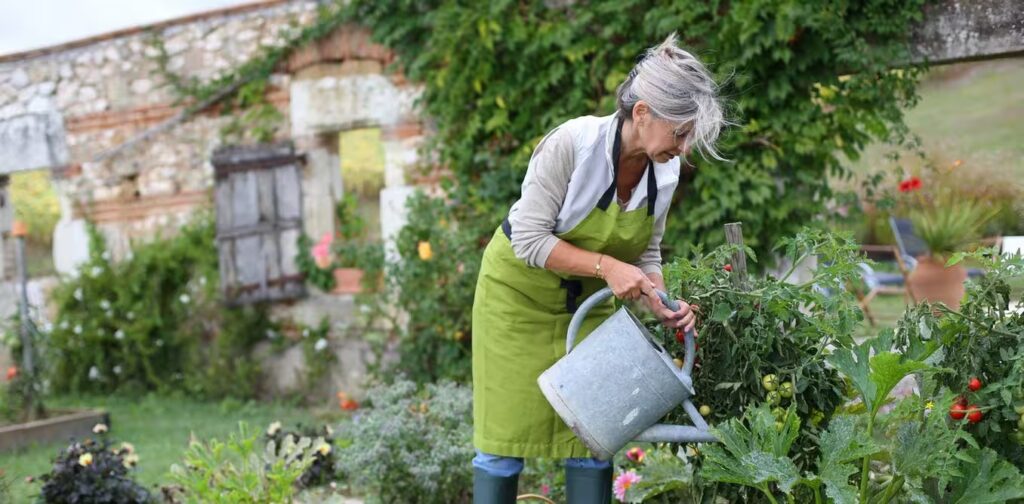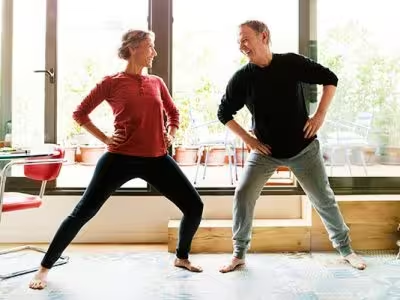How To Avoid Gardening Injuries
- June 6, 2025
One of the questions we often get asked in the clinic is if there is any time of year that’s worse for injuries. I’d say we probably get the most phone calls on the Monday morning after the 1st nice weekend of the spring, when everyone has understandably been keen to get out in the garden again. In this article we are going to explore some of the measures that you can take to avoid gardening injuries.
It is important to remember that gardening is quite a physical activity. Most people are a lot less active through the cold, wet and dark days of winter. If that is true of you, then your body will have lost some of its physical fitness, and is probably less flexible and less stable than it was in the Autumn. Before you get out in the garden, try spending the next week or two building up your activity levels. Walking, swimming, cycling, pilates and yoga are all fantastic. Whatever type of movement or exercise works for you will do the trick, just try to gradually increase your movement and activity levels.
It is also important to warm up. You wouldn’t walk into the gym and immediately start lifting heavy weights, so why would you walk into the garden and start lifting heavy pots, or digging beds? Make sure you go for a short walk and do some gentle stretching before you start.
If it’s cold, wait until later in the day when it’s warmer. When your body is cold, your body draws blood away from the peripheral muscles and joints. Less blood means poorer lubrication in the joints and less flexibility in the muscles, leaving them more prone to strain. Again, go for a short walk or do some gentle stretches, as this will encourage circulation in these tissues and leave them less susceptible to injury.
Another common issue with gardening is repetitive strain. Lots of the jobs we do in the garden require one repetitive movement with our body in one fixed position. One thing that works well is to do your gardening tasks like circuit training. Set up three or four jobs that you need to do, and spend 10-15minutes on each one before moving to the next in a cycle. By doing this you will be constantly changing your position and be much less likely to injure yourself.

You can avoid gardening injuries by lifting or carrying things correctly. Here are three things to be aware of;
- One, make sure you are conscious of the weight of the object you are going to lift. If an object is heavier, or lighter than we expect it to be, it can cause strain when we go to pick it up.
- Two, be clear in your mind where you are carrying the object from and to. You don’t want to pick something up before realising that there are other objects where you want to put it down. Check there are no obstacles in your path to trip on, or hurt yourself trying to manoeuvre round.
- Three, lifting technique. Bend at your knees and your hips and keep your back straight. It sounds simple, but getting it right can be tricky. Check out this video to see exactly how you should be doing it.
Tips with Tools
Using the right tool for the right job is another important way to avoid gardening injuries.
- Use tools with long handles, such as forks and trowels. Some tools have extensions or telescopic arms which reduce your need to stretch.
- Use pruners and loppers that have a ratchet system. This makes cutting easier and saves putting pressure on the back and shoulders. Keep the blades sharp to avoid extra strain.
- Put secateurs in a holster attached to your belt. This saves having to constantly bend to pick them up.
- Try not to use heavy watering cans but if you do have a larger one, try to only fill it halfway.
- Lawnmowers – use one with suitable length handles and preferably with an electric start motor. Keep yourself in an upright position when mowing and avoid swaying from side to side.

Tips with Tools
Taking regular exercise is one of the best ways of reducing back pain. As described above, walking, cycling and swimming are great ways of keeping your back healthy. Group activities such as Pilates and Yoga are also very good for your strength and flexibility. Make sure you find a group that does small size classes so the instructor can monitor your technique. For more advice on how to maintain good physical health and avoid injury, please get in touch.
